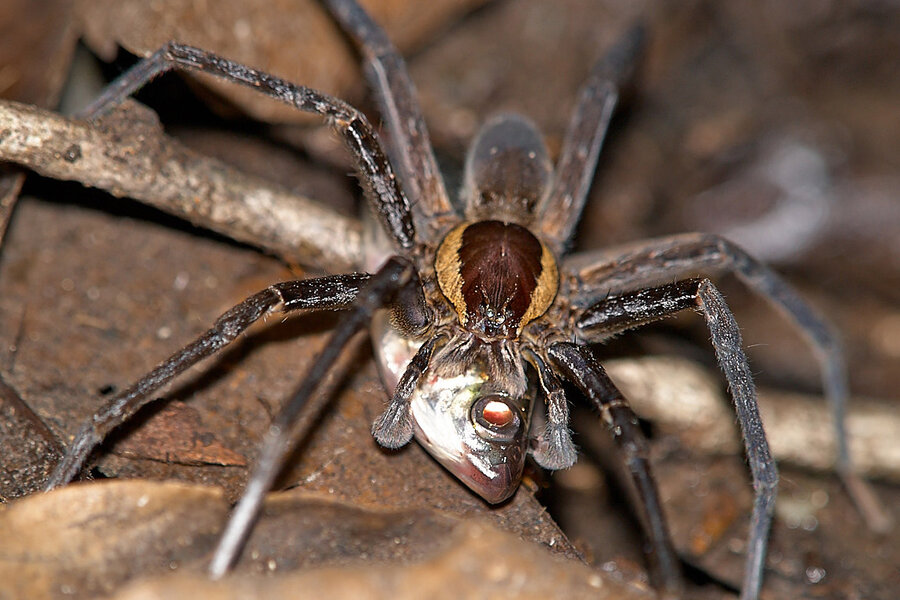Scientists reveal spiders' surprising food choice
Loading...
Spiders are most famous for dining on insects, but scientists have discovered many species of spiders who also catch and devour fish.
These spiders can be found on every continent except Antarctica, reports a new study published by zoologists Martin Nyffeler of the University of Basel, Switzerland, and Bradley Pusey of the University of Western Australia.
Although the fish these spiders eat are small by human standards – just 2 to 6 centimeters long – these fish are an average of 2.2 times the length of the spiders' bodies and up to 4.5 times their weight.
How do they do it? Fish-eating spiders are largely semi-aquatic, so they can walk on water, swim, or at least reside comfortably near water.
Some of the species observed capturing or devouring fish have included different types of nursery web spiders, wandering spiders, long-legged water spiders, and wolf spiders. Most of these are considered hunting spiders, that is, spiders that capture food without using a web.
One species of wandering spider, the Ancylometes rufus, can dive under the water for up to 20 minutes, according to the researchers. Adults can have a leg span of 20 centimeters, which helps them catch their prey underwater.
A smaller spider, the water spider Argyroneta aquatica, actually lives underwater. In a lab, researchers witnessed this spider using venom to kill fish.
Other semi-aquatic spiders hunt safely above the water. They brace themselves with their back legs, using a plant or a stone. Then their front legs are free to grab their prey.
Many of these spiders' mouths are large and strong enough to bite into the fish. The spiders use venom, sometimes containing neurotoxins specific to vertebrate nervous systems, to paralyze or kill their prey. To consume the large meal, the spiders must inject their prey with digestive enzymes that dissolve tissue.
Following capture, the spiders usually drag their prey to dry land as quickly as possible. This allows them to eat without fear of the fish slipping away. They also must find a safe spot, because it can take several hours for the spiders to eat such a large meal.
Drs. Nyffeler and Pusey compiled 89 accounts, published and unpublished, of spiders eating fish from around the world. Additionally, they contacted photographers who captured the predation and probed for more information about what they witnessed.
“Our evidence suggests that fish might be an occasional prey item of substantial nutritional importance,” said Nyffeler in a news release. Although the spiders’ diet still mainly consists of insects, fishy meals may provide a strong addition of protein. The researchers think the fish diet may be especially helpful for female spiders during mating periods, as the large meal provides much needed energy.
This isn’t the first time spiders have been found to supplement their insect-only diet with a more protein-rich meal. Some fishing spiders have been captured on video eating frogs, while other spiders have been seen eating mice, snakes or even small birds. Nyffeler coauthored a similar study last year compiling evidence from around the world that spiders catch and eat bats too.








